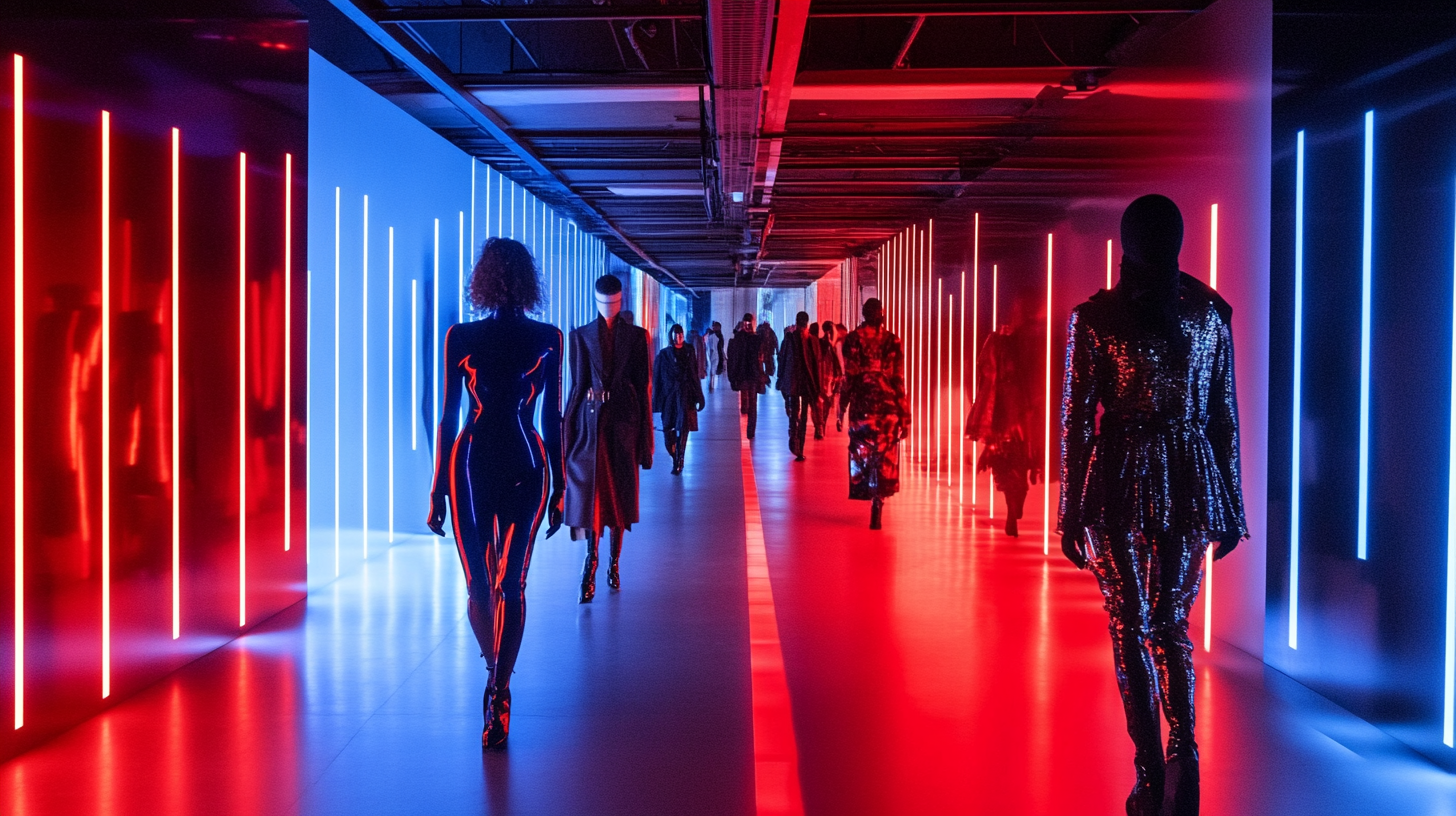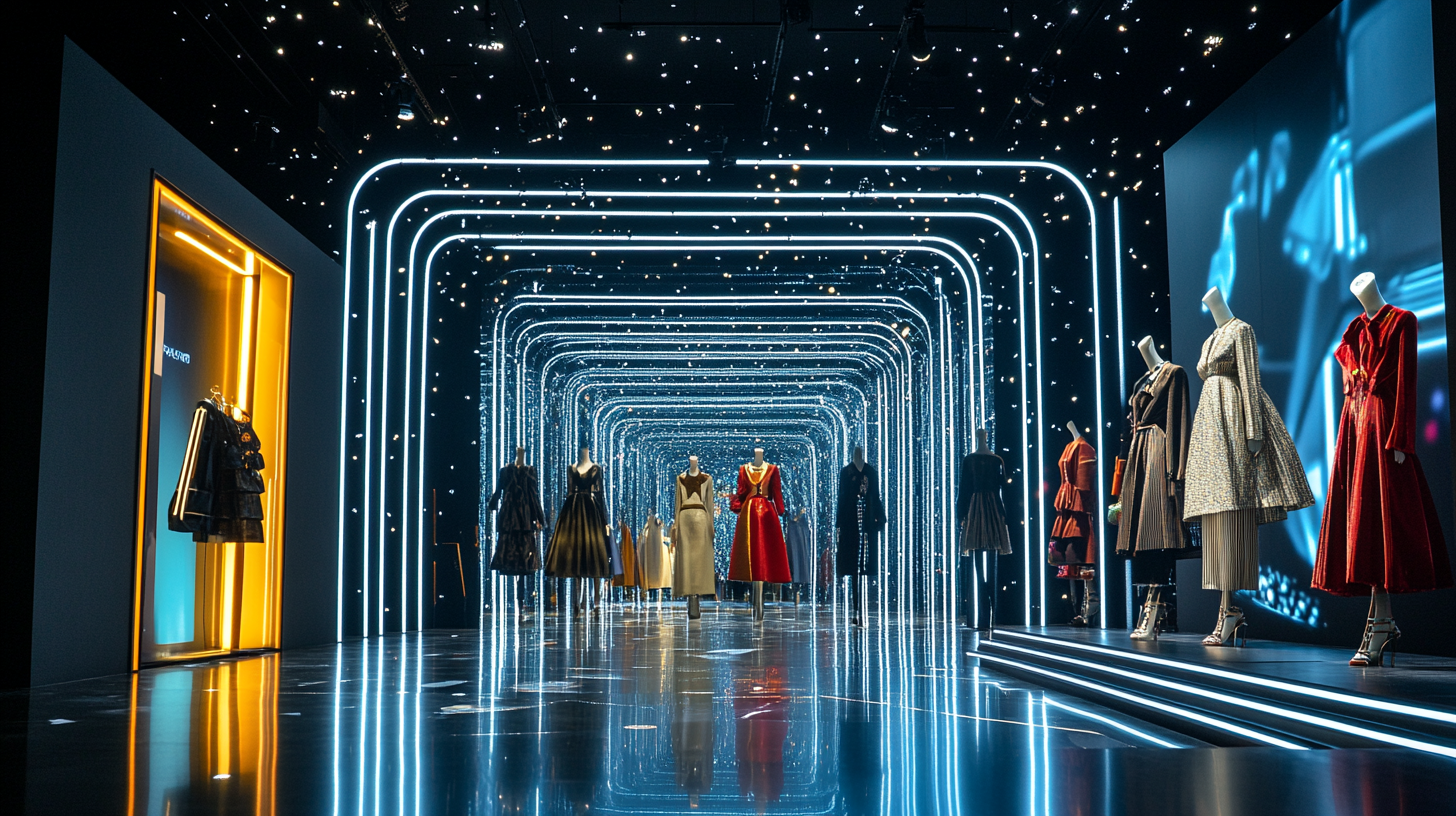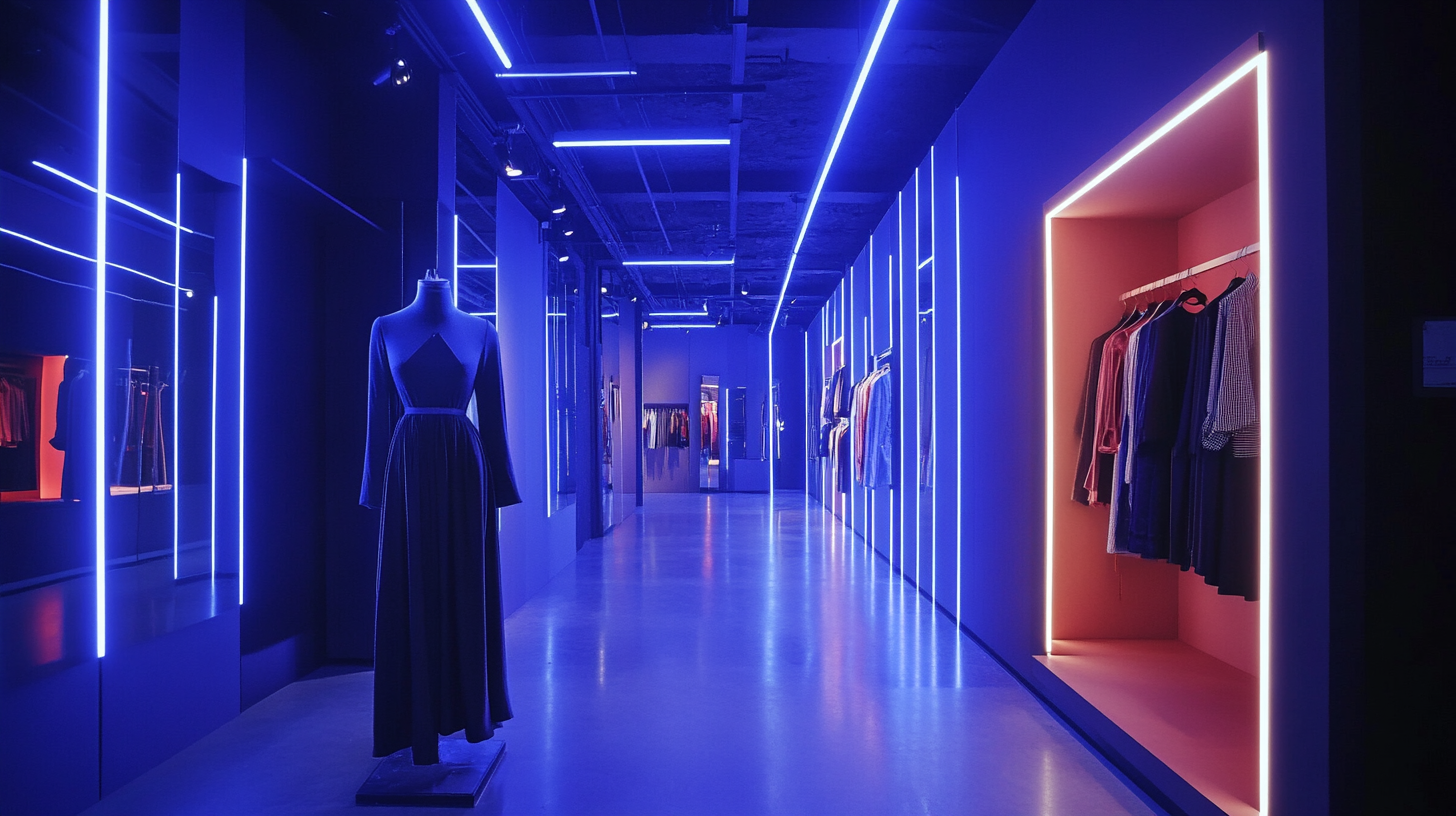2025 Global Trends in Fashion Lighting Innovations and Their Impact on Sustainable Designs
In the ever-evolving world of fashion, the role of lighting has become increasingly pivotal, particularly as we move towards 2025. Fashion lighting is not merely a functional aspect; it is a crucial element that influences the perception of garments, setting the mood and tone for collections and retail environments. As brands strive to create captivating experiences for consumers, innovations in lighting technologies are transforming the way fashion is presented and perceived. This blog explores the latest trends in fashion lighting, delving into how these advancements are shaping the industry's approach to aesthetics and functionality.
Moreover, the intersection of fashion lighting innovations and sustainability is a pressing conversation that cannot be overlooked. As the fashion industry continues to grapple with its environmental footprint, the integration of energy-efficient lighting solutions and eco-friendly materials is becoming a necessity rather than a choice. This blog will examine how these innovative lighting designs not only enhance the visual appeal of fashion but also contribute to the development of sustainable practices. By understanding these trends, we can appreciate the profound impact of fashion lighting on both design and sustainability in the dynamic landscape of the fashion industry.

Emerging Technologies Transforming Fashion Lighting for 2025
As we approach 2025, the landscape of fashion lighting is set to transform dramatically, driven by emerging technologies that prioritize sustainability. This shift not only influences the aesthetics of fashion but also encourages a deeper commitment to environmental stewardship. Innovative lighting solutions, including energy-efficient LED technology and smart lighting systems, are taking center stage, allowing designers to create immersive experiences while minimizing their carbon footprint. One of the standout trends is the integration of IoT (Internet of Things) in fashion lighting. Designers and retailers can now harness real-time data to optimize lighting for various environments, enhancing the shopping experience without excessive energy consumption. Additionally, the use of adaptive lighting systems that respond to customer interactions is becoming common, ushering in a new era where sustainability marries consumer engagement. Furthermore, the application of biophilic design principles in lighting creates a synergy between nature and technology. This approach not only brightens storefronts but also contributes to mental well-being by incorporating natural light patterns. As designers rethink their strategies, the emphasis on eco-friendly materials and technologies will redefine how fashion businesses illuminate their creations, ensuring a legacy that future generations can admire. With such innovations on the horizon, the future of fashion lighting in 2025 is poised to reflect a harmonious blend of style, function, and sustainability.

Sustainable Materials in Fashion Lighting: A Necessity for Eco-Friendly Designs
In today's fast-paced fashion world, the integration of sustainable materials in lighting design has become a crucial element for eco-friendly initiatives. As designers increasingly seek to minimize their environmental impact, selecting materials that are both durable and sustainable is no longer just an option—it’s a necessity. Innovations in bio-based materials, recycled components, and low-energy technologies are paving the way for a new standard in fashion lighting that aligns with the broader sustainability goals of the industry.
The use of sustainable materials in lighting not only reduces carbon footprints but also enhances the aesthetic appeal of fashion displays. Designers are now experimenting with natural fibers, reclaimed wood, and innovative plastics made from recycled waste. These materials not only provide unique textures and visual elements but also contribute significantly to the lifecycle sustainability of products. For instance, lighting fixtures made from bamboo or biodegradable plastics can complement eco-conscious fashion lines, creating a cohesive narrative that resonates with environmentally aware consumers.
Moreover, the impact of sustainable lighting goes beyond mere aesthetics. It influences consumer behavior and brand perception, encouraging a shift towards more responsible purchasing decisions. Brands that adopt sustainable practices in their lighting designs often find themselves favorably positioned in a marketplace that increasingly values environmental responsibility. As we look towards 2025, the fusion of fashion and sustainability through innovative lighting solutions will undoubtedly play a significant role in shaping a more sustainable future in the fashion industry.

The Role of Smart Lighting in Enhancing Retail Fashion Experiences
In the evolving landscape of retail fashion, the integration of smart lighting technology is transforming the way consumers experience shopping. Smart lighting systems allow retailers to create dynamic environments that adapt to various factors such as time of day, current promotions, and even customer preferences. This kind of adaptability not only enhances the aesthetic appeal of fashion displays but also strategically influences consumer behavior, increasing engagement and ultimately driving sales.
One notable example is the use of color-changing LEDs that can be tailored to highlight specific clothing items or entire collections. By setting the mood with different hues and intensities, retailers can evoke certain emotions, making an outfit appear more appealing or invoking a sense of urgency during sales events. Additionally, advanced sensors can detect customer movement and adjust lighting accordingly, ensuring that every corner of the store is illuminated optimally, thus enhancing the overall shopping experience.
Moreover, smart lighting systems contribute to sustainable design practices by minimizing energy consumption. By leveraging daylight sensors and automated systems, retailers can significantly reduce their carbon footprint while maintaining an attractive shopping environment. This dual benefit of aesthetics and sustainability positions smart lighting as a key player in the future of fashion retail, where consumer consciousness about environmental impact continues to rise. As we move toward 2025, the blending of innovative lighting technologies with sustainable practices promises to redefine the retail fashion experience.

Trends Shaping Consumer Preferences in Sustainable Fashion Lighting
The trend towards sustainable fashion is profoundly reshaping consumer preferences, particularly in the realm of fashion lighting. As young consumers increasingly reject fast fashion in favor of sustainable practices, brands are rethinking their design and marketing strategies. According to a recent report by NielsenIQ, consumer enthusiasm for sustainability has been steadily increasing over the past decade, highlighting a significant shift in purchasing preferences that retailers cannot afford to ignore.
In particular, the findings from the SS26 PV fashion trend preview reveal that innovations in lighting design not only enhance the aesthetic of sustainable clothing but also align with broader ecological principles. By incorporating energy-efficient lighting solutions, brands not only reduce their environmental footprint but also create immersive shopping experiences that resonate with eco-conscious consumers. The demand for sustainable materials and designs is projected to grow, with the market for plant-based natural fibers expected to expand significantly, reaching a CAGR of over 7.2% from 2025 to 2034.
Moreover, as the luxury goods market in China enters a transformative period, there is a clear indication that consumer preferences are shifting towards brands that embrace sustainability. It’s essential for leaders within the fashion industry to adopt innovative lighting technologies that support sustainable designs, capturing the attention of a demographic that values social and environmental responsibility. The amalgamation of fashion and sustainable technology not only meets the demands of the modern consumer but also paves the way for a more resilient and eco-friendly fashion ecosystem.
Case Studies: Successful Integrations of Innovative Lighting in Fashion Industry
In recent years, the fashion industry has witnessed a significant shift towards incorporating innovative lighting technologies to enhance sustainability and elevate consumer experiences. The integration of energy-efficient LED lighting and smart fixtures not only reduces the environmental impact but also showcases the artistry of fashion in a captivating manner. For instance, the use of dynamic lighting systems in flagship stores can transform the ambiance, making the products visually appealing while promoting sustainability efforts.
Successful case studies highlight how major brands are adapting these innovations to align with environmental goals. For example, many top tea beverage brands in China, such as Heytea and Nayuki, have embraced these advancements to create inviting and modern storefronts that resonate with the younger demographic. The strategic use of illuminated displays enhances product visibility and contributes to a unique shopping atmosphere, ultimately driving sales and brand loyalty.
Furthermore, exhibitions during events like the Paris Fashion Week demonstrate the pivotal role of lighting in fashion presentations. Renowned designers leverage sophisticated lighting techniques to enhance the mood and narrative of their collections, underscoring the essential relationship between innovation and sustainable design practices. As research indicates, the fashion industry accounts for approximately 4% to 10% of global carbon emissions, highlighting an urgent need for transformative approaches. By embracing such innovations, the fashion sector can significantly reduce its carbon footprint and set a precedent for future advancements in sustainable design.
